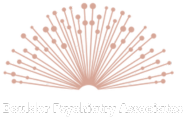How do we determine what is “normal” behavior for teens, versus, a need to find help in the form of a psychiatrist and/or therapist? Generally speaking, if your teenager has irritability without any clear triggers, and their irritability can lead to harm to themselves or to others, then it may be time to seek help.[1] Teenaged boys and girls can be irritable, often due to hormonal changes, increased stress from academic, social, or personal pressures, being frustrated because they want to be independent, yet still need their parents for guidance and help, plus not getting enough sleep (teens typically need 8-10 hours of sleep per night and rarely get this).[2] They may snap at family members, may display impatience or frustration, may have occasional angry outbursts especially in response to stress.
If a teen is violent, for example hitting, throwing objects, verbally abusing others, it suggests an inability to manage emotions in a healthy way.[3] It could indicate unresolved trauma, mental health conditions, bullying, or other external influences. They may be exposed to violence at home, in media, or in social environments. There may be peer pressure (especially if involved in a gang), they may have what is called Oppositional Defiant Disorder (ODD, typically unable to tolerate guidance from a person with perceived power, a uniform, etc.), or a Conduct Disorder (CD, typically involves the legal system).[4]
Of course, there is always the threat of substance/alcohol abuse. We know teens like to “experiment,” especially with substances that are fairly available in certain communities (here in Boulder, it’s often cocaine—not so much marijuana as people thought would be the case since it has been legalized). Alcohol is almost considered a “right of passage.” Not all teens drink alcohol, but it’s prevalent enough it can be a concern. Finally, it’s not the use itself, but if the use is constant or chronic, then it can become addicting. Not all molecules are the same; many are addictive to different extents: opiates (oxycontin…very quickly, as in a little more than a week of regular use), benzodiazepines (valium, Xanax…) within a couple months of regular use, while other molecules, such as Tylenol, aren’t physically addictive.[5] These time-scales are relative—some experience addiction faster than others.
In one sense, these substances/alcohol can be experienced without becoming an addiction problem, but they are “sneaky,” in that the more someone does this, soon they realize they can’t stop. Whatever the reason for a teen’s bad behaviors, if they are concerning in the first place to the adults around them, they can become worse, more of a prominent feature, rather than a bug, if not addressed. The question of how to address them is likely best helped by a mental health professional, who can help determine whether underlying issues, such as trauma or a mood disorder, are contributing to the behavior. Other issues that are of concern, that also involve the “reward-pathway” neurotransmitter, dopamine, include food (becoming overweight from “emotional eating”), or the internet (“dopamine hits” do the same thing as cocaine and conspire to keep a person “doom scrolling,” or constantly checking their Instagram, Facebook, TikTok, or other “social media” sites).[6] A strong advocate for improving the online experience is Dr. Robert Lustig, who recently said, “there is nothing social about social media.”[7] There have been many personalities who have decried what seems to be a predatory approach to social media—Tristan Harris: “Our attention is being mined by technology companies, and we are more divided and less happy because of it”; Jonathan Haidt: “Social media has created a world where bullying never stops, and comparison is constant”; and Sherry Turkle: “Social media gives us the illusion of connection, but it’s connection without real conversation.”[8]

Knowing that teens will have mood swings, emotional changes, they seek independence, they are more easily influenced by their peers, social changes, they have fluctuating motivation, they like to experiment with identity, clothing, hairstyles, even minor rule-breaking, a heightened sense of self-consciousness, developing opinions and values, risk-taking, fluctuating communication, and physical changes, it is a challenge to know when they need more support than you typically give them. The best advice, which may seem generic, is to be available, set boundaries, model healthy behaviors, and show that you know how to seek help when needed.[9]
Footnotes:
- American Psychological Association. Recognizing when your teen needs professional help. Washington, DC: American Psychological Association, 2021, pp. 14-16.
- National Sleep Foundation. Teens and Sleep Health. Arlington, VA: National Sleep Foundation, 2019, pp. 22-25.
- Centers for Disease Control and Prevention (CDC). Youth Violence: Risk and Protective Factors. Atlanta, GA: CDC, 2022, pp. 5-9.
- American Psychiatric Association. Diagnostic and Statistical Manual of Mental Disorders (DSM-5). Arlington, VA: American Psychiatric Publishing, 2013, pp. 462-469 (Oppositional Defiant Disorder) and 471-478 (Conduct Disorder).
- National Institute on Drug Abuse. Understanding Drug Addiction and Dependency Timelines. Bethesda, MD: National Institutes of Health, 2021, pp. 10-13.
- Lustig, R. The Hacking of the American Mind: The Science Behind the Corporate Takeover of Our Bodies and Brains. New York, NY: Avery Publishing, 2017, pp. 112-117.
- Lustig, R. Social Media’s Role in Mental Health Challenges for Youth. San Francisco, CA: University of California Press, 2022, pp. 203-208.
- Harris, T., Haidt, J., & Turkle, S. Various quotes on social media’s psychological impact cited in Proceedings of the Center for Humane Technology Conference. Los Angeles, CA: CHT Publishing, 2020, pp. 45-50.
- Child Mind Institute. Parenting Teens: A Guide to Developmental Challenges. New York, NY: Child Mind Institute Press, 2023, pp. 35-40.




